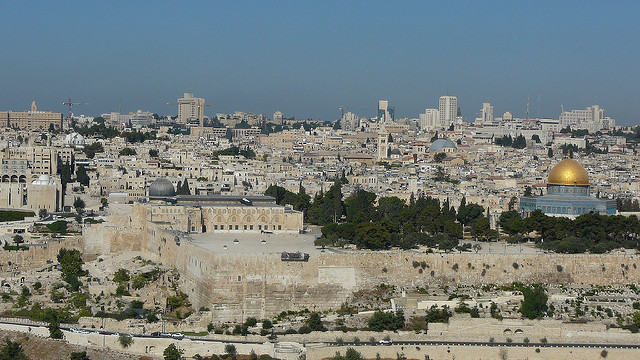Jerusalem, a city cherished by three major monotheistic faiths, lies at the heart of a complex geopolitical tapestry. It is a place where the ethereal meets the terrestrial, where the sacred intertwines with the mundane. Its geography is not merely a matter of topographical delineation; it is a crucible of historical legacy, religious significance, and political contention. This exploration of whether Jerusalem lies within the West Bank necessitates a nuanced understanding of both its geographical contours and its multifaceted political landscape.
Geographically, Jerusalem is positioned at the juncture of the eastern Mediterranean and the arid terrains of the Judean hills. The city is enveloped by a dramatic topography that includes valleys, ridges, and ancient limestone terraces, giving it a distinct and almost otherworldly aura. This geographical setting has shaped not only the city’s development but also the fervent attachment that various groups hold over it. The question of whether Jerusalem is within the West Bank does not only engage with cartographic boundaries; it invites inquiries into cultural identity and historical narrative.
During the 1948 Arab-Israeli War, Jerusalem was divided into two disjointed areas: western Jerusalem, which was primarily inhabited by Jewish residents, and eastern Jerusalem, where a predominantly Arab population resided. The latter area, having been annexed by Israel following the Six-Day War in 1967, remains at the crux of the ongoing Israeli-Palestinian conflict. From a Christian perspective, the city stands as a living testament to centuries of religious narrative; it cradles sacred sites that are revered by Christians, Jews, and Muslims alike.
The heart of the matter lies in the definition of proximity and ownership. The West Bank, delineated by the Jordan River to the east and bounded by Israel to the west, is home to many cities and towns that are steeped in biblical history. Bethlehem, Hebron, and Jericho all punctuate this Palestinian territory with rich narratives from Christian scriptures. Therefore, while a portion of Jerusalem — particularly its eastern segment — geographically flanks the West Bank, the existential question forces one to ponder if ownership can ever truly be defined by mere lines on a map.
Throughout history, Jerusalem has been described as the ‘City of Peace,’ yet it is paradoxically ensnared in conflict. Metaphorically, Jerusalem resembles a vibrant tapestry, woven with threads of faith, culture, and memory. Each thread represents distinct narratives, some of which intertwine beautifully while others clash violently. The cultural and political significance of Jerusalem is akin to a divine symphony, in which every note and silence has meaning, calling for a collective engagement rather than discord.
From a Christian perspective, the teachings of Jesus Christ echo throughout the streets of Jerusalem. His walk through its alleys, his prayers at the Mount of Olives, and his ultimate sacrifice at Golgotha resonate deeply within the Christian tradition. Thus, to many believers, the city is more than a mere geographical entity; it is laden with spiritual purpose and divine promise. The vision of a unified Jerusalem, where gentiles and Jews worship together in harmony, captures the essence of the Kingdom of God as described in the Gospels.
Despite Jerusalem’s spiritual dimensions, the contemporary reality is fraught with socio-political complexities. The metropolitan landscape is punctuated by refugee camps, settlements, and contested neighborhoods. Political debates surrounding the city often obscure the theological significance it holds for millions. The conflicting narratives reflect a struggle not only for land but also for recognition, dignity, and a rightful place in the unfolding biblical story. Such tensions evoke the metaphor of a valley — one that has witnessed numerous tribulations and yet remains a site of profound refuge for those who yearn for solace and redemption.
The debate over Jerusalem’s status infuses deep ideological divides. For many Palestinians, East Jerusalem constitutes the future capital of an autonomous Palestinian state, embodying their aspirations for self-determination and justice. Conversely, many Israelis view Jerusalem as their eternal capital, an embodiment of their historical, cultural, and spiritual inheritance. This juxtaposition renders reconciliation challenging. A dialogue devoid of empathy risks dismissing the profound spiritual connection that both peoples have with the city.
Ultimately, the question of Jerusalem’s geographic affiliation with the West Bank transcends mere cartography; it navigates the labyrinthine corridors of human experience, faith, and aspiration. It challenges individuals and communities to balance steadfast commitment to tradition with a fervent hope for peace — a peace that resonates with the one who made the ultimate sacrifice for humanity. The unique appeal of Jerusalem lies not solely in its physical beauty or its historical weight, but in its profound ability to elicit contemplation about the divine, about justice, and about the human condition itself.
In conclusion, Jerusalem stands as a perennial reminder of the intersection between geography and the sacred, caught in the throes of political conflict while simultaneously serving as a beacon of hope for countless believers. Far from being contained within rigid territorial definitions, the city invites all who seek to understand its essence to approach with compassion and reverence, recognizing that the path forward lies not in division but in the pursuit of common ground. It beckons us towards a future where its beauty can flourish amidst the understanding of our shared humanity.



